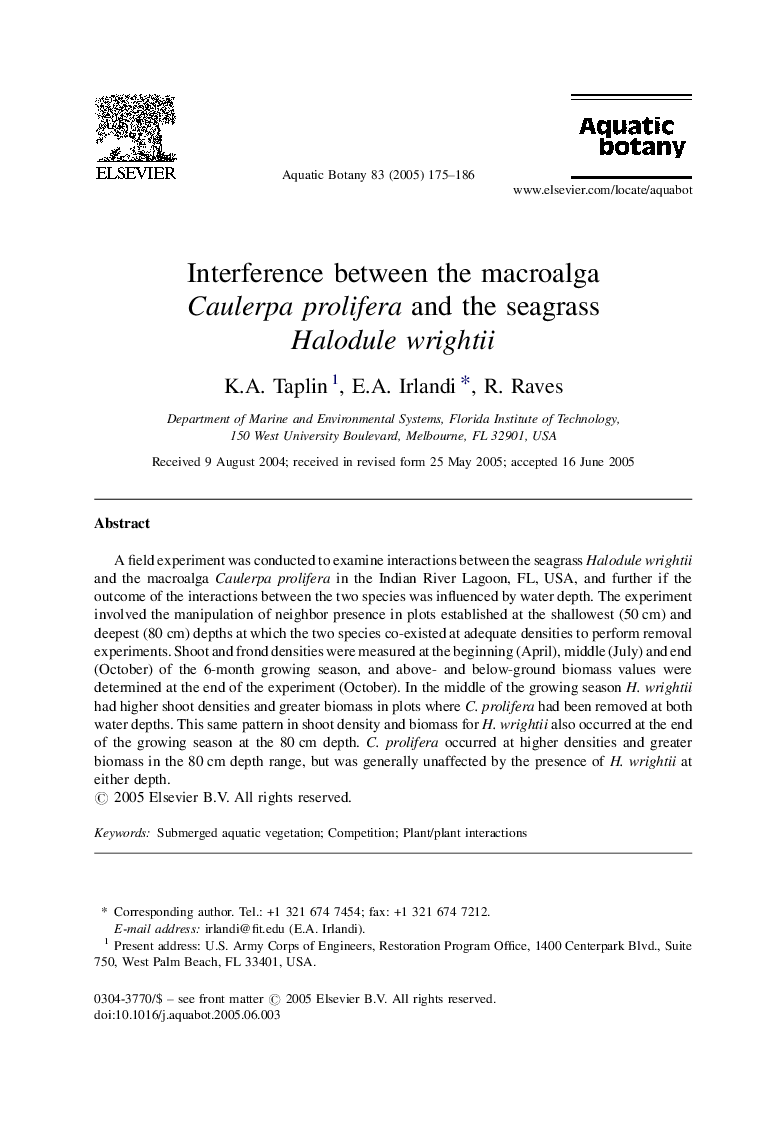| Article ID | Journal | Published Year | Pages | File Type |
|---|---|---|---|---|
| 9477553 | Aquatic Botany | 2005 | 12 Pages |
Abstract
A field experiment was conducted to examine interactions between the seagrass Halodule wrightii and the macroalga Caulerpa prolifera in the Indian River Lagoon, FL, USA, and further if the outcome of the interactions between the two species was influenced by water depth. The experiment involved the manipulation of neighbor presence in plots established at the shallowest (50Â cm) and deepest (80Â cm) depths at which the two species co-existed at adequate densities to perform removal experiments. Shoot and frond densities were measured at the beginning (April), middle (July) and end (October) of the 6-month growing season, and above- and below-ground biomass values were determined at the end of the experiment (October). In the middle of the growing season H. wrightii had higher shoot densities and greater biomass in plots where C. prolifera had been removed at both water depths. This same pattern in shoot density and biomass for H. wrightii also occurred at the end of the growing season at the 80Â cm depth. C. prolifera occurred at higher densities and greater biomass in the 80Â cm depth range, but was generally unaffected by the presence of H. wrightii at either depth.
Related Topics
Life Sciences
Agricultural and Biological Sciences
Aquatic Science
Authors
K.A. Taplin, E.A. Irlandi, R. Raves,
